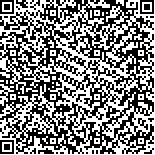| 摘要: |
| 米氏凯伦藻作为我国沿岸典型的有毒赤潮甲藻,近年来赤潮频度越来越密,赤潮规模越来越大,持续时间也越来越长,造成了严重的经济损失,并且威胁到海洋生态系统的健康。众多研究表明藻际细菌可能是影响赤潮生消与有毒藻产毒的关键生物影响因子。为揭示米氏凯伦藻共培养菌群的物种多样性信息,本文通过高通量测序技术手段,分析了我国沿岸产米氏凯伦藻(Km02)共培养菌群的种类、丰度、多样性及系统发育信息。结果显示,米氏凯伦藻(Km02)共培养菌群共有40个种与已有数据库匹配,隶属于4个门(Phylum),11个纲(Class),21个目(Order),26个科(Family),37个属(Genus)。其中优势菌属有8个(>5%),分别为Balneola(20.28%)、Marinobacter(19.25%)、Rhodobacteraceae科下的未知属(13.15%)、Alteromonas(8.88%)、Methylophaga(8.17%)、Thalassospira(6.24%)、Reichenbachiella(5.92%)及Mesoflavibacter(5.41%)。研究结果表明我国沿岸产米氏凯伦藻(Km02)含有生物多样性较高的共培养菌群,且具有探寻未知海洋细菌的潜力,同时该研究结果也为未来更进一步研究细菌群落对米氏凯伦藻赤潮暴发与消亡,以及产毒特性等机制的研究提供了实验方法与奠定了理论基础。 |
| 关键词: 赤潮藻 米氏凯伦藻 共培养菌群 |
| DOI:10.11693/hyhz20180700179 |
| 分类号:Q948.885.3;X55 |
| 基金项目:国家重点研发计划资助,2017YFC1404300号;国家自然科学基金青年项目,41706191号;国家海洋局第二海洋研究所所长专项团队项目,JT1803号;海洋赤潮灾害立体监测技术与应用国家海洋局重点实验室开放研究基金课题,MATHAB201704号;国家自然科学基金项目,41676111号;卫星海洋环境动力学国家重点实验室自主项目,SOEDZZ1702号 |
附件 |
|
| CO-CULTURED BACTERIAL COMMUNITY OF KARENIA MIKIMOTOI (KM02) |
|
WANG Peng-Bin, DAI Xin-Feng, LU Dou-Ding
|
|
Key Laboratory of Marine Ecosystem and Biogeochemistry, Second Institute of Oceanography, Ministry of Natural Resources, Hangzhou 310012, China
|
| Abstract: |
| Karenia mikimotoi is a typical toxic harmful algal along the coast of China, and its bloom becomes more frequent, bigger in scale, and lasts longer, and has caused heavy economic losses and threats to the health of the residents in recent years. Many studies have shown that bacteria in the phycosphere may play a key biological role that affects a harmful algal bloom and toxin production. To reveal the species diversity and composition of co-cultured bacterial community of K. mikimotoi, we analyzed bacterial species, relative abundance, diversity and phylogenetic information of co-culture bacterial communities of K. mikimotoi (Km02) via high-throughput sequencing. The OTU (operational taxonomic units) taxonomy analysis showed that 40 species co-cultured bacterial community associated with K. mikimotoi (Km02) could match the established database, including 4 phyla, 11 classes, 21 orders, 26 families, and 37 genera. The top eight species (>5%) included Balneola (20.28%), Marinobacter (19.25%), unknown species in Rhodobacteraceae (13.15%), Alteromonas (8.88%), Methylophaga (8.17%), Thalassospira (6.24%), Reichenbachiella (5.92%), and Mesoflavibacter (5.41%). This study is the first one reporting the biodiversity of co-cultured bacterial community associated with K. mikimotoi (Km02), providing a potential of discovering new marine microbial species from this strain, and a theoretical basis for understanding the mechanism of the bacterial community to the initiation and termination of the harmful algal bloom of K. mikimotoi, as well as the toxin production. |
| Key words: harmful algae Karenia mikimotoi co-cultured bacterial community |
